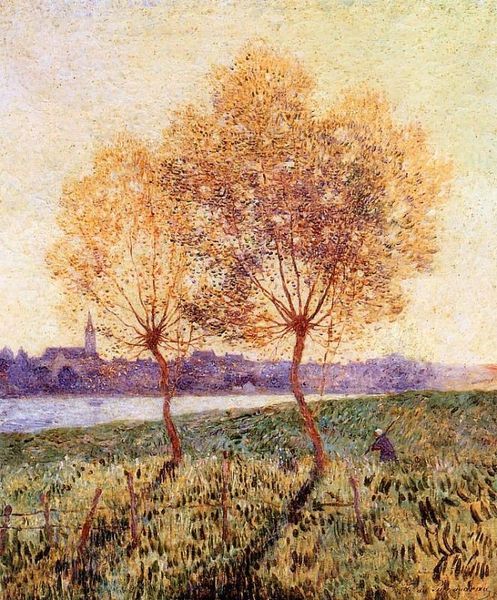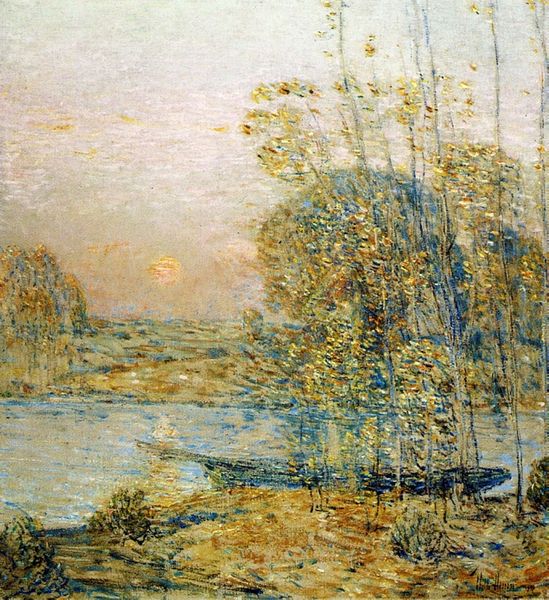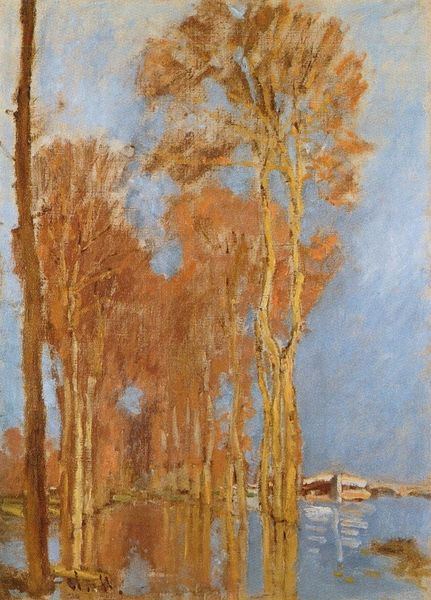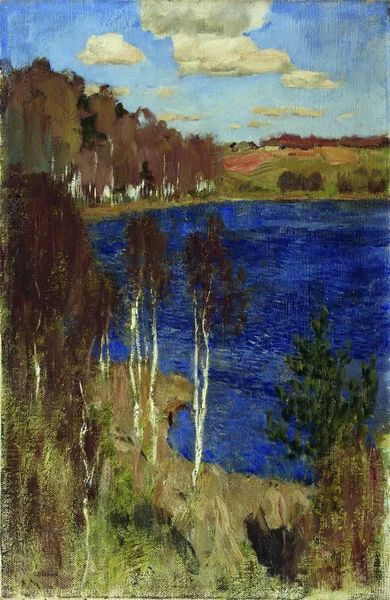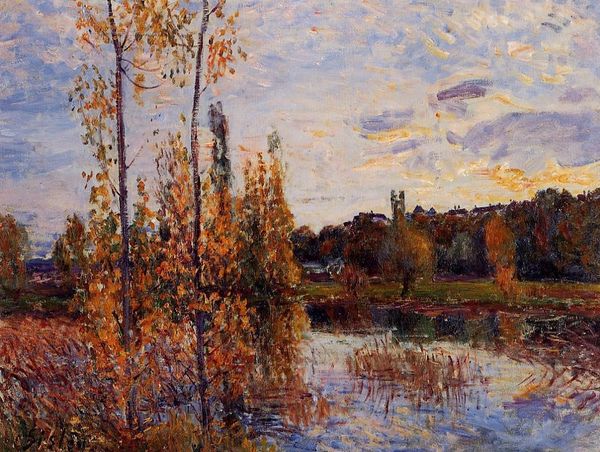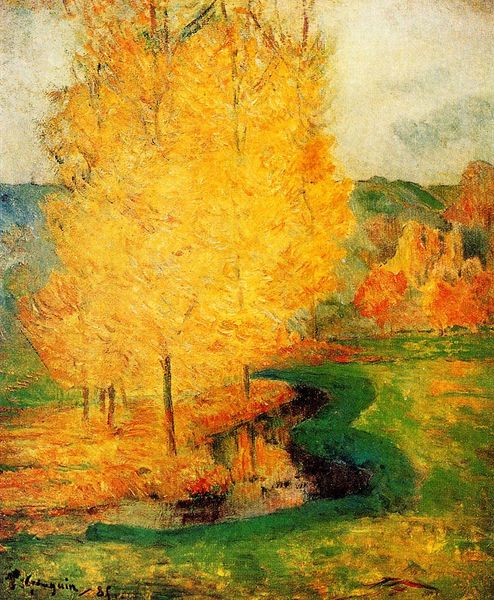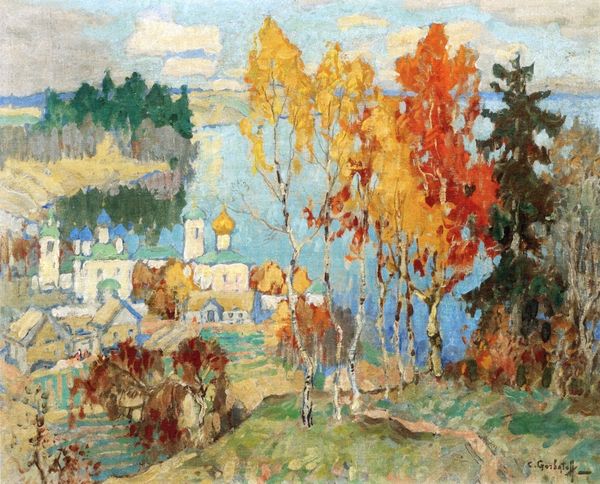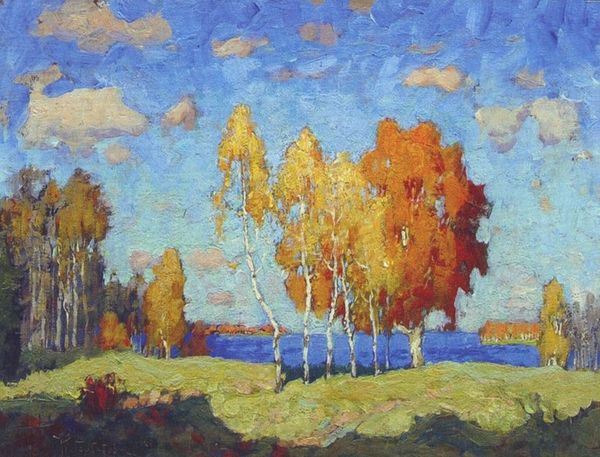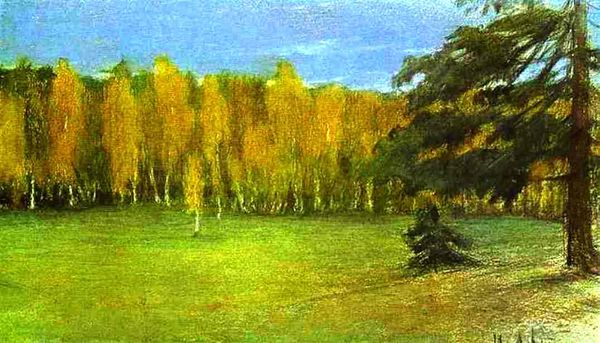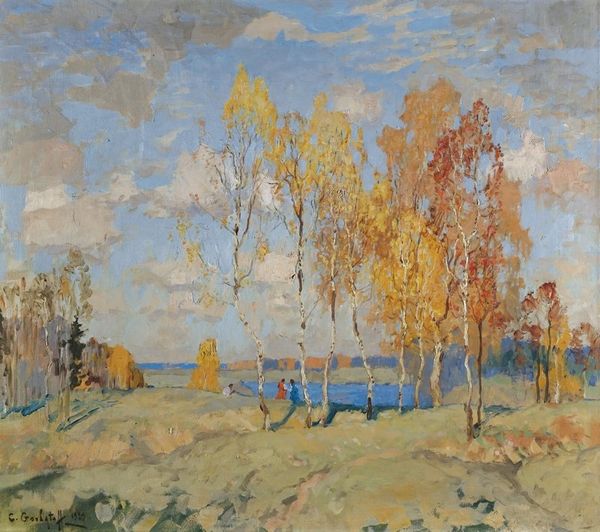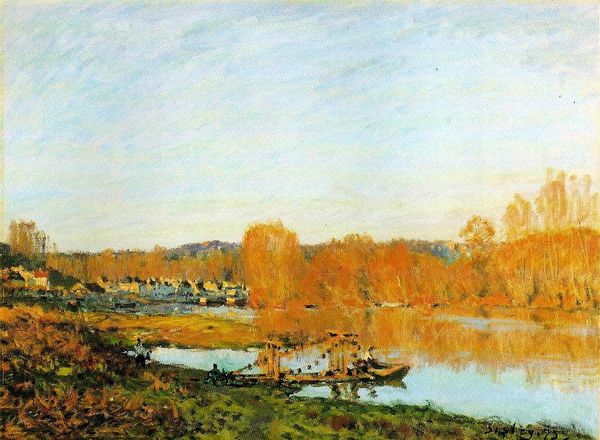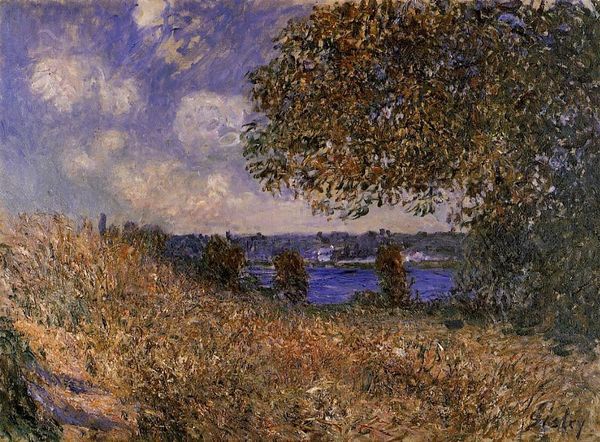
Dimensions: 52 x 84.6 cm
Copyright: Public domain
Curator: Isaac Levitan's "Golden Autumn," completed in 1896 and now residing in the Tretyakov Gallery, strikes me immediately. Editor: It evokes a profound sense of tranquility and perhaps, a melancholy inherent to the autumn season. Curator: The composition is remarkable—the winding path, the grouping of birches on the left, contrasted against the expanse of water. Note how Levitan employs loose brushstrokes and subtle gradations to capture light. It adheres nicely to impressionistic ideals, even within his distinctive romantic bent. Editor: But that so-called "tranquility" might belie a deeper commentary. Consider the historical context. Levitan, of Jewish heritage, worked in a Russia rife with anti-Semitism. Do these empty landscapes— however picturesque—reflect the alienation and displacement felt by marginalized communities during that period? Is nature a retreat, or is it emblematic of their exclusion? Curator: Such readings, while viable, require extrapolation beyond what’s visually present. I observe the careful arrangement of the forms and lines: verticality in the birch trunks is beautifully juxtaposed against the horizontal expanse of the river, and the subdued but potent colour choices resonate. These artistic components function in harmony. Editor: Agreed, but consider, that these formal qualities only strengthen such interpretations! The lack of human presence— the quiet solitude—speaks volumes about the artist's lived reality under oppressive conditions. It encourages the reading of "emptiness" as both scenic, and social critique. The absence is deafening. Curator: But this silence – a formal choice– provides space for contemplation. It seems rather, to showcase Levitan's aesthetic prowess to paint his homeland in transition, and that carries emotional resonance, separate of its possible associations. Editor: Art invites varied perspectives, so what you and I derive individually speaks also of the painting's value! Curator: Precisely. Its complexity permits layered analysis—formal or contextual, historical or social—leaving no voice unacknowledged in the space it offers.
Comments
No comments
Be the first to comment and join the conversation on the ultimate creative platform.
